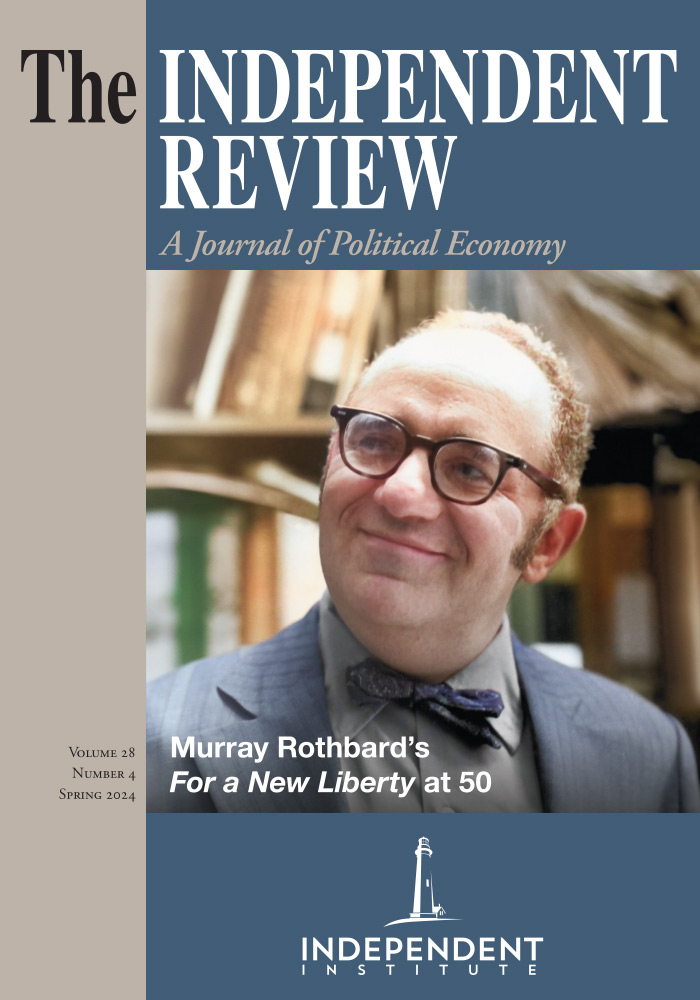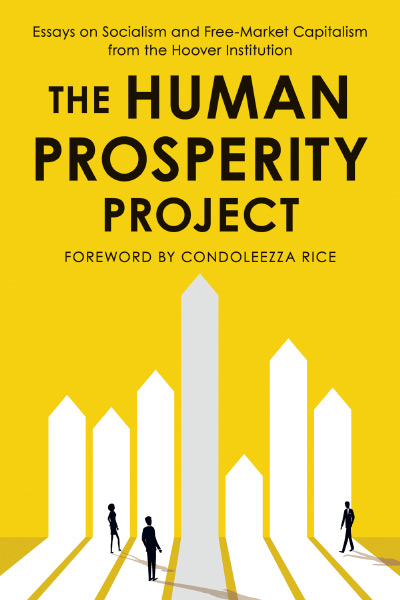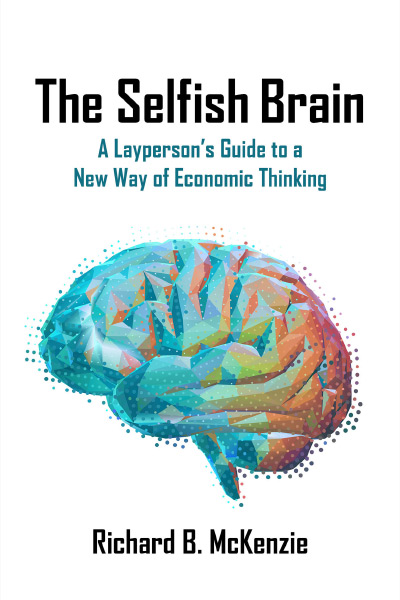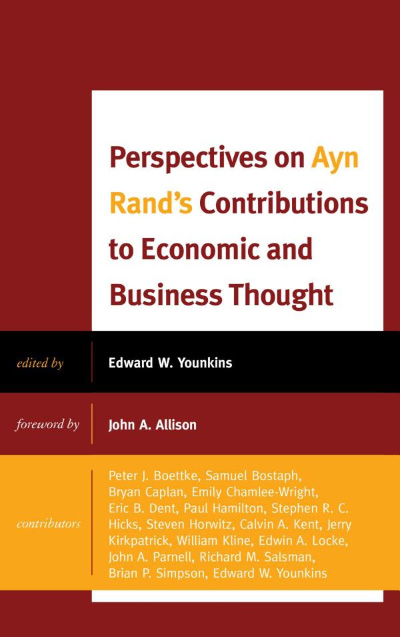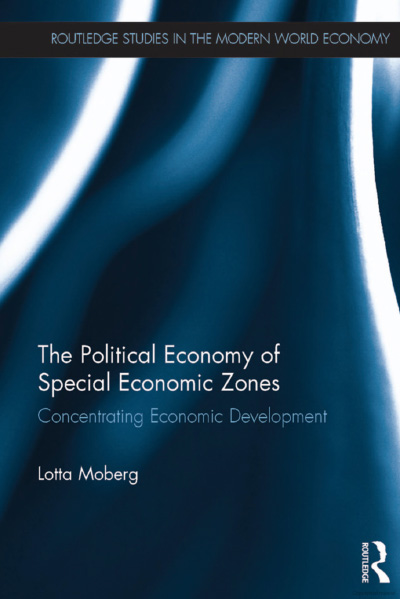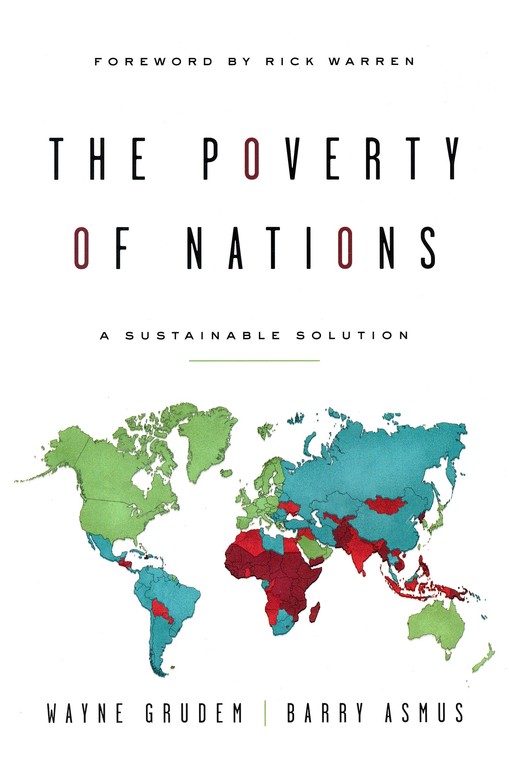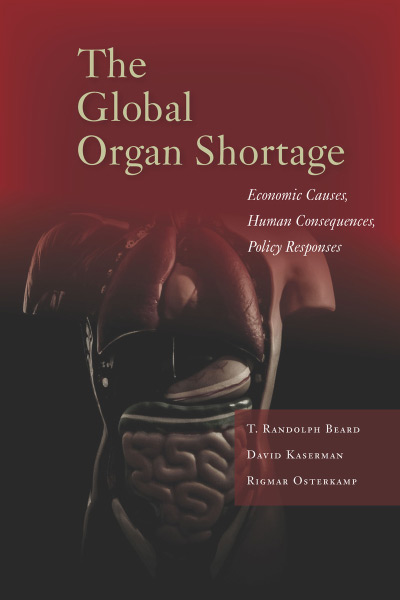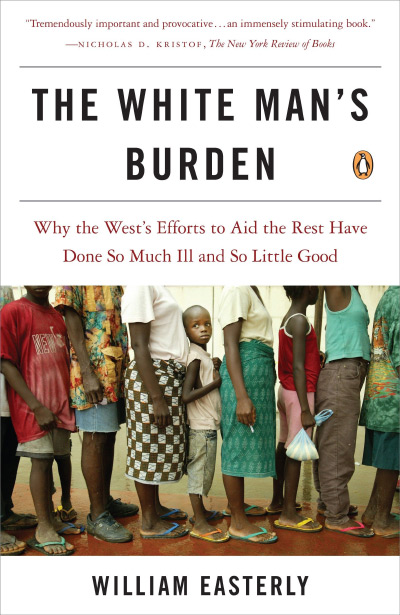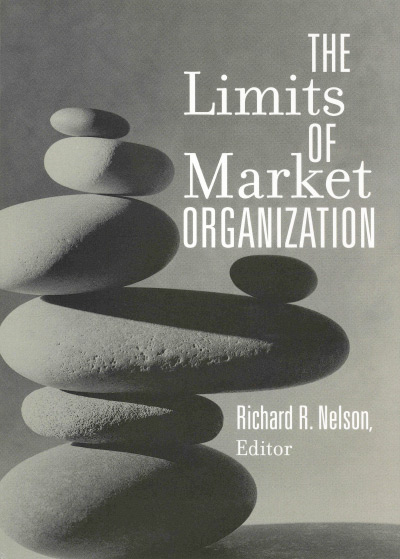The Hoover Institution’s Human Prosperity Project investigates the effects of socialism, free-market capitalism, and hybrid systems on human flourishing and prosperity more broadly. The essays published in this volume represent a subsample of the output of the project and are specifically directed at addressing the more recent return of socialist idealism, especially among younger generations. The volume provides a multi-faceted and forceful defense of the idea that capitalist systems are best at delivering both broad levels of economic prosperity as well as overall human flourishing.
The book is organized in four parts. Part 1 summarizes the historical debate on capitalism vs. socialism and argues that the incentives inherent in a capitalist order are more likely to generate prosperity. Part 2 provides a set of empirical examinations of the disparate outcomes of capitalist and socialist systems. Part 3 examines the reasons for the recent revival of socialist ideas. Part 4 explores the effects of progressive government policy imitating a mixed economic system like European social democracy.
Chapter 1 by Peter Berkowitz provides the theoretical foil framing the book. Berkowitz “juxtaposes the political philosophies of John Locke and Karl Marx” (p. 2) as representatives of capitalist and socialist ideology. He reviews their arguments on political power, limited government, and property rights and asserts that while both philosophers predicted that their most favored system would produce human flourishing, only Locke’s system of property rights and limited government actually has been able to produce this outcome.
In chapter 2, Larry Diamond reviews the empirical evidence on the effects of political and economic freedom on various aspects of human flourishing and finds that liberal democratic systems tend to outperform more authoritarian regimes in terms of human development (as measured by the UN Human Development Index which combines gross national income per capita with years of life expectancy and education) as well as economic growth.
In chapter 3, Stephen Haber, argues that the crucial difference between relatively more-and-less-free economies is the effect of freedom on the propensity of individuals to innovate and take risks. Freer economic systems encourage risk-taking and innovation and foster a process of economic prosperity which is impossible to replicate in authoritarian socialist systems.
Co-editor, Edward P. Lazear, examines the empirical record of 162 countries and finds that market-based reforms almost exclusively resulted in improved “incomes of all groups, including the lowest group” (p. 108) noting that despite such widespread gains, transitions to freer economic systems can also come with increased inequality or even income declines across all income groups, as was the case for many Eastern European countries.
In his chapter titled, “Environmental Markets versus Environmental Socialism,” Terry Anderson summarizes the literature on the topic of how markets affect the environment. Anderson concludes that while environmental regulation in the 1970s was successful because it addressed the low-hanging fruit of environmental problems, regulation has been less successful at solving the remaining, more marginal, environmental problems. He argues that in most cases, establishing property rights or adopting market-based solutions is the best path forward, even when it comes to solving the most challenging environmental problems: “The conclusion is simple—property rights encourage prosperity and environmental stewardship” (p. 134).
In chapter 6, Russell Berman reviews the history of socialism in Germany tracing the origins of the repressive authoritarian nature of socialist institutions to the Communist Manifesto. He explains that German Communists, like Rosa Luxemburg, were acutely aware of the tendency—she called it Bolshevism—of socialist institutions to repress individual freedom and democratic society and were openly critical of it. Berman further argues that these “infringements on human freedom that made life in the GDR [East Germany] undesirable” (p. 143) became so obvious in the German context because of the direct comparison between East and West, which clarified not only vast discrepancies in material prosperity but also quality of life more broadly construed.
Elizabeth Economy reviews the Chinese model of political-economic organization in chapter 7. She argues that the progress made under Deng Xiaoping and Jiang Zemin, who both opened the Chinese economy up to trade and foreign direct investment in the 1980s and 90s, has been reversed by their successors Hu Jintao and Xi Jinping who have overseen a return of prominent state-owned enterprises and trade protection policy. Economy argues that the Chinese model is not distinct from other Asian tiger economies that came before it and similarly sought to balance economic growth with social welfare concerns.
Michael Auslin discusses the fate of freedom in Hong Kong, China, and the Indo-Pacific arguing that the recent return of Leninist-style control of the Chinese population through the Chinese Communist Party does not bode well for quality of life in China as well as Hong Kong. He argues that while citizens in neighboring Indo-Pacific countries may envy Chinese success, no one is arguing for other countries to adopt the Chinese model. Rather, other countries in the region aspire to adopt the Japanese model of a capitalist liberal democracy.
Niall Ferguson evaluates Joseph Schumpeter’s assertion that capitalism could not survive and that ultimately socialism would prevail using the historical performance of the Soviet Union and the more recent track record of China. He concludes that Schumpeter failed to see that the rule of law and property rights may be sufficient protection against the evils of socialism and that most systems will return to capitalism once the “inefficiencies of state control” become apparent. Such “self-correction becomes almost impossible” however where property rights have “essentially ceased to exist” (p. 219).
Michael McConnell argues in chapter 10 that while the American constitution “does not commit the nation to any particular ideological or economic theory” it “stands as a barrier to revolutionary absolutism” (p. 224) and, because of its underlying philosophy of individual rights, is most consistent with liberal democracy and private property. The Constitution’s framework protects the nation against haphazard institutional change because it requires slow and deliberate changes. He concludes that the biggest threat to the American constitution today are not young socialist idealists but factional and populist politicians. John Yoo, similarly, argues in chapter 11 that the decentralization enshrined in the American federal system through the constitution has prevented or at least slowed the continual encroachment of socialist idealism and central planning through the federal government.
In section IV of the book, several authors review current policy debates in social democracies around the world. They all conclude that irrespective of the specific policy area, movements towards central planning or a greater role for the regulatory state have been detrimental for the countries that have embraced them. Lee Ohanian reviews labor market policies like taxation, minimum wages, unionization, and occupational licensing and finds that all of them “depress the efficient functioning of the labor market” (p. 188) and that they come at a large cost for society at large while the benefits they generate accrue to very few concentrated individuals. Scott Atlas argues in chapter 13 that while it is heavily regulated the American health care sector is unique in the world with roughly two hundred million privately ensured individuals. He argues that the empirical record shows clearly that health care reform directed at reducing cost, to be successful, must embrace deregulation and privatization. John F. Cogan and Daniel L. Heil assess the economic impact of various proposed national Universal Basic Income plans in chapter 14. They find that none of the plans which have been proposed to date would meet the objectives of their proponents in terms of the adequacy of benefits, the work incentives of the program, or the fiscal impact. Joshua Rauh and Gregory Kearney argue that most proposals for socialist reforms, while acknowledging the need for greater taxation, often rely on higher top-bracket income tax rates and wealth taxes to finance expanded government programs. Reviewing the record on the empirical effects of such taxes, Rauh and Kearney conclude that wealth taxes and higher tax rates for top-income earners come at the high cost of reduced economic activity and prosperity and should therefore be rejected.
The late George P. Shultz, Chicago economist and former statesman extraordinaire, concludes the volume with a review of the history of price and wage controls under President Nixon. He argues that the famous warning of former Fed chairman Arthur Burns (preceding the intervention)—that the economy was no longer working in the traditional way and new policy tools were required—was fatally flawed and that the empirical record of the policy changes he instigated confirmed economic orthodoxy. He concludes that the best guideposts for future policy are “our shared American principles of individual liberty and prosperity” (p. 407).
Conversations with conservative colleagues about the return of socialist idealism inevitably conclude in similar ways: The problem with today’s college students and young voters is that they were not alive when the Soviet Union collapsed. They are not aware of the evils of socialism, and they don’t know enough history to understand the problems associated with heavy-handed government intervention that individuals—even in this country—experienced as a result of wage and price controls in the 1970s. They have taken freedom for granted and do not understand why we should fight to protect it.
The essays in this volume could have been inspired by just such a conversation among the contributors: while the goal of setting the empirical record straight is not explicitly acknowledged, the volume would do an excellent job at filling the historical knowledge gaps of young socialist idealists that my conservative colleagues lament. Across the different contributions, the book offers a broad historical overview of the empirical track record of socialism as well as liberal social democracy. It finds both systems wanting in comparison to the human flourishing and economic prosperity capitalism offers.
| Other Independent Review articles by Diana W. Thomas | ||
| Fall 2024 | Hannah’s Children: The Women Quietly Defying the Birth Dearth | |
| Spring 2024 | The Power of Hope: How the Science of Well-Being Can Save Us from Despair | |
| Fall 2023 | Knut Wicksell: A Consistent Marginalist | |
| [View All (6)] | ||

